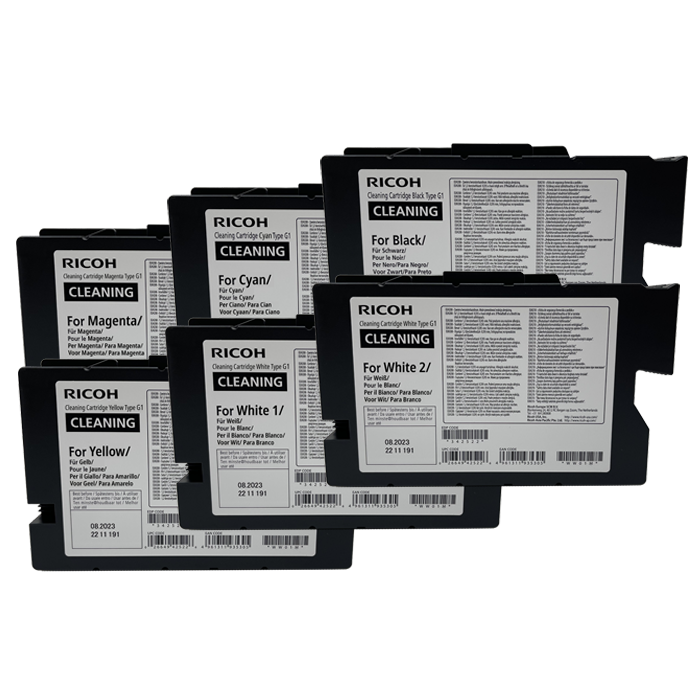
Application of DTG White Ink Pre-Treatment Solution
Paul Boody
Benefits of this improved pretreatment include:
• Fewer printed t-shirt defects
• Less sensitivity to fading due to UV Exposure
• Reduced post-pressing shine
The DTG White Ink Pre-Treatment solution is for use only with DTG white ink. In order to achieve consistent and even white prints on dark or light colored cotton fabrics, proper application of the DTG White Ink Pre-Treatment solution must be practiced. Application of the pretreatment solution is key to obtaining white opacity and ink adhesion to the fabric.
Equipment needed for proper DTG White Ink Pre-Treatment solution application:
• N95 Approved Respirator (3MTM Model # 8210 or similar)
• Foam Roller (the type used for painting)
• Liquid Mistifier (airbrush, air pump sprayer, fine mist power sprayer, such as Wagner® Power Sprayer Model HVLP)
• T-shirt Press
• DTG Release Paper - (In some cases, parchment paper with silicone base may cause insufficient bonding issues)
Recommended procedure:
The following procedure will help ensure consistent quality and performance of the DTG White Ink:
1. Agitate or shake the pretreatment solution prior to filling your sprayer. Locate the sprayer area in a different room than your printer(s). Overspray can find its way into the printer and potentially damage the device.
2. Locate the sprayer area in a well ventilated area. Set the heat press for 170°C (~340°F)
3. In humid environments, it is often beneficial to pre-press the shirt (using the parchment paper as a barrier from the press) for 10 to 15 seconds prior to applying the pretreatment. This removes some of the water naturally trapped in the fibers.
4. Using the spraying system, spray DTG White Ink Pre-Treatment solution evenly on the area that is to be printed. The recommended coverage is about 20g to 25g (0.7 oz to 0.9 oz) for a 14" x 17" printing area.
For example :
- Set your sprayer for medium coverage. This is normally the setting between no liquid being sprayed and the maximum available.
- Prime the sprayer for a few seconds by spraying into a large cup, but not on to the shirt area. This helps prevent larger drops that occur when the sprayer is starting up.
- Keep the sprayer about 12 inches (0.3 meters) from the shirt and begin spraying from the top to the
bottom in a left to right (and then reverse, right to left) motion without ever turning off the sprayer.
- It is good practice to allow the sprayer to go beyond the edges of the shirt before beginning or reversing direction. This prevents more pretreatment from being deposited on the shirt during the direction change.
- If all settings correct, you should dispense the proper amount of pretreatment solution in about 15
seconds.
5. Following the application of the pretreatment solution, and prior to heat pressing, close examination of the garment’s surface should show the appearance of fine droplets not unlike dew on grass.
A representation is shown below:

6. After spraying the garment, wipe with the foam roller, uniformly and in one direction, to get even coverage.
7. For best image quality, drying the pretreated garment in a t-shirt press (using the parchment paper as a barrier from the press) is preferred. A minimum of 15 seconds, up to a maximum of 60 seconds at the 170°C (~340°F) setting.
Examples:
1) Correct Pretreatment:
The image below represents a shirt that has been properly pretreated, printed, heat-pressed and subsequently washed through three (3) industrial washes. Note the white under-base and color
retention.
This is a properly treated, printed and post-treated shirt.

2) Insufficient Pretreatment:
If too little pretreatment solution is applied, the white ink will have a mottled appearance after printing.
This is due to an insufficient amount of pretreatment to keep the white ink layer on the surface (the ink soaks into the fibers of the shirt).

3) Excessive Pretreatment:
Applying too much pretreatment solution will provide you with a very good looking print prior to washing. However, excessive application of pretreatment will cause poor wash fastness and durability. The white layer becomes much more susceptible to flaking off of the shirt in a wash if too much pretreatment is applied.
Here is a shirt with an excessive amount of pretreatment looks very good after printing and pressing:

The same shirt, with excessive pretreatment solution applied, is shown below after washing. This shirt exhibits the cracking and loss of color associated with too much pretreatment being applied.
















